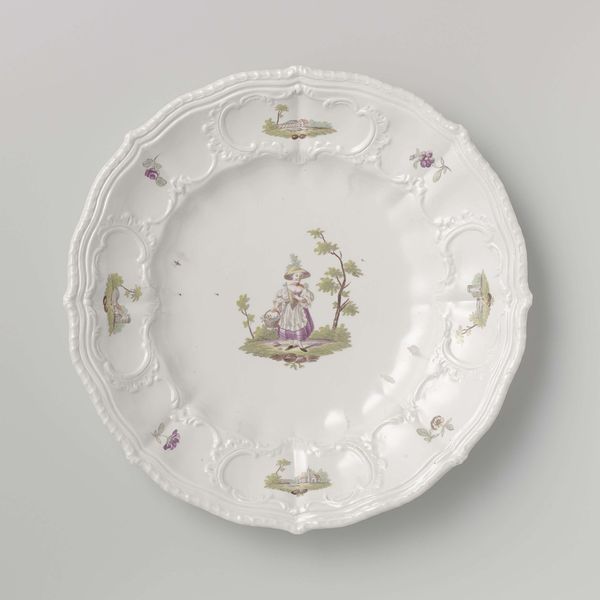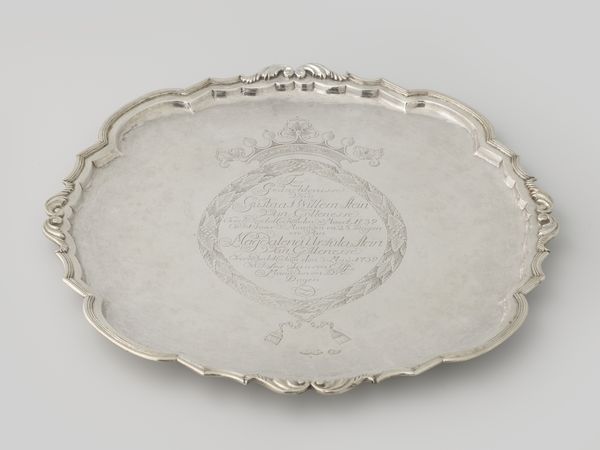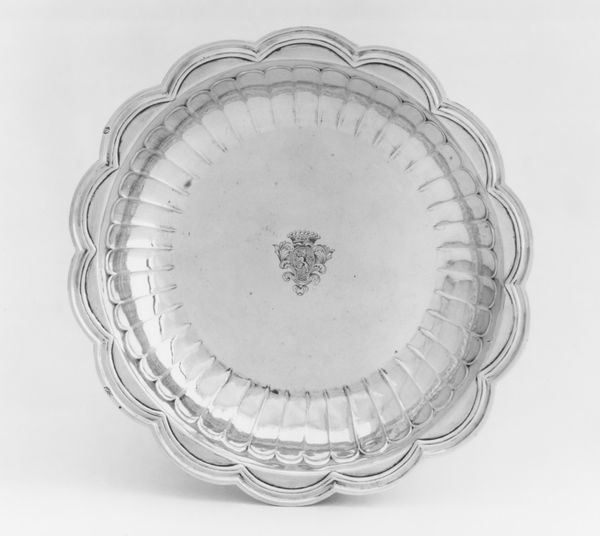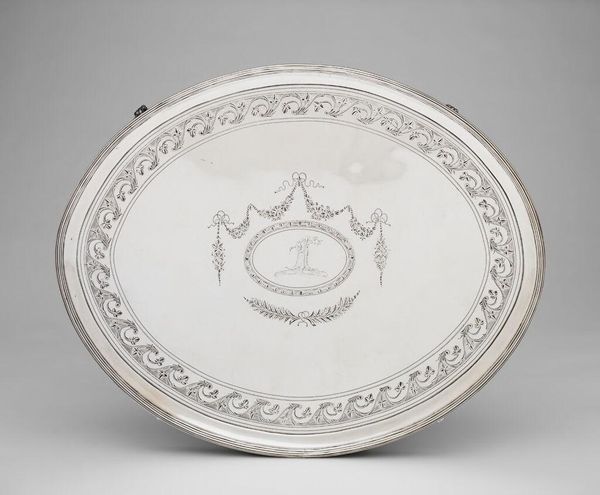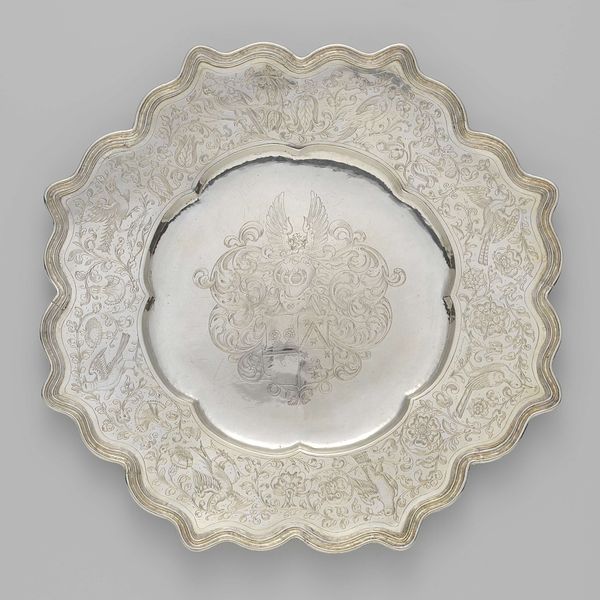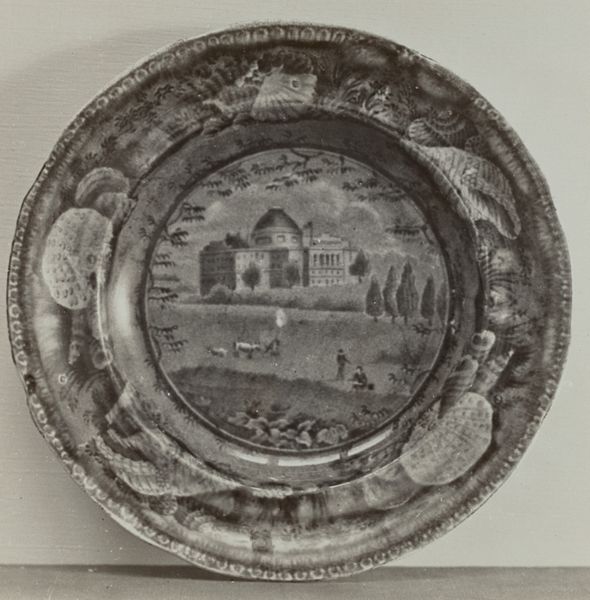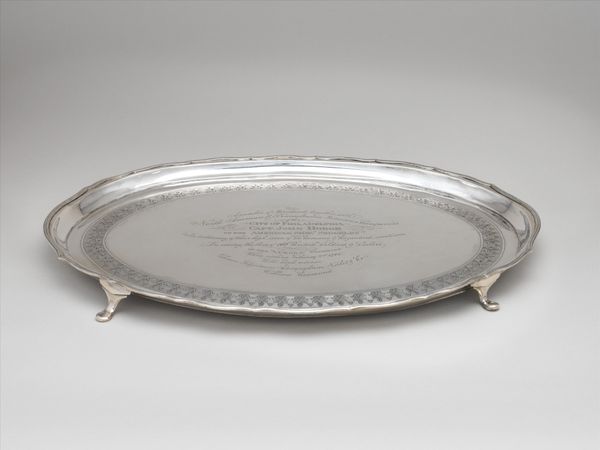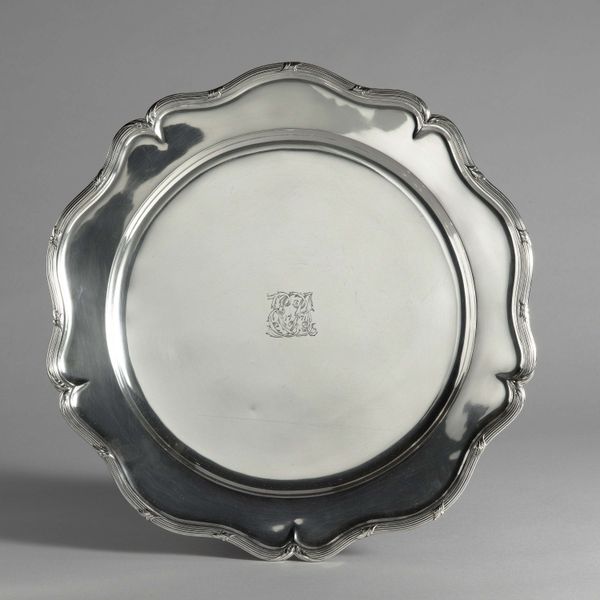
#
product photograph merchandise
#
egg art
#
culinary art
#
stoneware
#
white focal point
#
ceramic
#
round circular shape
#
watercolour bleed
#
watercolour illustration
#
watercolor
Dimensions: height 2.6 cm, diameter 12.2 cm
Copyright: Rijks Museum: Open Domain
Curator: What immediately strikes me is the understated elegance, a delicate sepia scene playing out on this Loosdrecht plate. There's a theatrical air to it. Editor: Indeed. The Rijksmuseum holds this plate, “Schotel met Cap. Ceremonia en Lavinia,” dating from 1774 to 1784. Loosdrecht porcelain, as a material, held a unique social position. Its production was intensely driven by the count of Nassau, but it was still highly valuable and therefore consumed by very wealthy members of society. Curator: It's intriguing how the design becomes part of the object’s function; each piece from Loosdrecht had a direct place in upper-class social rituals and performances. What's the theatrical significance of the characters depicted here? Editor: Well, we see "Capitano Ceremonia," a character borrowed from the Italian Commedia dell'Arte, juxtaposed with Lavinia. So, immediately we are thinking about themes around love, performance, desire, and power. The plate literally puts the spectacle of romance on the table. Curator: Fascinating! Looking closer at the rendering itself, notice the meticulous details achieved in what appears to be hand-painted ceramic work. It's more than a mass-produced dish. Each one bears evidence of the craftsman's touch, connecting artistry and industry, blurring boundaries of what would be considered a "precious art object." The fact that there’s visible bleed, given the sepia washes, adds an aesthetic sensitivity, no? Editor: Precisely! And thinking historically, the workshops creating these wares, and objects such as this one in particular, represent cultural ideals around trade and craftmanship. Even how such a product enters a private space—how does that impact one’s ideas of power or privacy? Curator: These are precious windows into the material and social fabric of the era. The careful treatment of porcelain complicates common art market narratives. Editor: It encourages us to think about the complex histories of material culture, consumption, and how social practices influenced the design and reception of this very unique artwork.
Comments
No comments
Be the first to comment and join the conversation on the ultimate creative platform.
